Please cite this article as:
Adams, I. ‘Ghosts are Much of What Makes a Space a Place’: Interpreting the Relics of the 1936 Berlin Olympic Village through Art, In Piercey, N. and Oldfield, S.J. (ed), Sporting Cultures: Global Perspectives (Manchester: MMU Sport and Leisure History, 2019), 43-68.
ISBN paperback 978-1-910029-49-7
Chapter 3
______________________________________________________________
‘Ghosts are Much of What Makes a Space a Place’: Interpreting the Relics of the 1936 Berlin Olympic Village through Art[1]
Iain Adams
______________________________________________________________
Origins of the 1936 Olympic Village
On May 13, 1931, the International Olympic Committee (IOC) announced that Berlin would host the 1936 Olympic Games.[2] The Deutscher Olympischer Ausschuss (German Olympic Committee, DOA) recognized that three main problems had to be solved before the IOC’s annual session of 1933 to be held in Vienna; one of these was ‘the accommodations for the athletes’.[3] After considering several options for housing the teams in financially strapped times, the Organizing Committee asked the German Defence Department if an Olympisches Dorf (Olympic Village) could be erected in the Döberitz military training grounds, about 15 kilometres west of the stadium.[4] The Chief of Defence Staff, Lieutenant-General Walther von Reichenau, opined that the proposed village should be a permanent facility and, post games, would house an infantry officers’ training college, a training infantry battalion and a military hospital.[5] Hitler’s defiance of the Treaty of Versailles in expanding the army from seven to thirty-six divisions resulted in the army being over 20,000 officers, some three million NCOs and enlisted men short of its requirements.[6]
On November 7, 1933, Hitler agreed to von Reichenau’s idea and, in essence, the Army became the Olympisches Dorf developer. Werner March was appointed as chief architect and Hauptmann Wolfgang Fürstner was assigned as the Commandant of the village.[7] March’s plan centred upon a small valley immediately north of the Berlin-Hamburg highway (Fig. 1, A). The entrance plaza was positioned at the foot of the valley adjacent to the road (Fig. 1, B). The plaza featured the reception building and a vehicle tunnel under the busy highway for traffic going to the stadium and Berlin.[8] A large socio-cultural centre, the Hindenburghaus, was situated just over 100 metres to the north-east of the reception building and provided recreational, training and medical facilities for the athletes before becoming the home of the officer training school (Fig. 1, C). The athletes were housed in single story cream-walled and bright red-roofed residences which ‘fitted neatly into the contours, and looked well against the green background of the trees’ (Fig. 1, D).[9] These buildings were solidly constructed as they were designed as military barracks. Hübner’s detailed study of Haus Schandau revealed that shatterproof concrete was incorporated into the structure and at least some of the residences were equipped with basement air raid shelters.[10] At the head of the valley was the elliptical Bauhaus-style Speisehaus der Nationen, the Restaurant of the Nations, designed to become a military hospital after the Games (Fig. 1, E). A sports field with a running track was constructed some 300 metres to the north-east of the Speisehaus on the valley crest with a sports hall at one end and a swimming pool at the other (Fig. 1, F & G). During the Games period, the sports field, sports hall and the pool were mainly for recreation as each team had separate training facilities assigned around the city. Wildlife was encouraged throughout the site, with nesting boxes, birdbaths and feeding troughs. Black and white storks were introduced to the artificial lake that was integrated into the parkland, with a sauna at one end and being overlooked by a circular outdoor coffee bar, the Bastion (Fig. 1, H & I).[11]
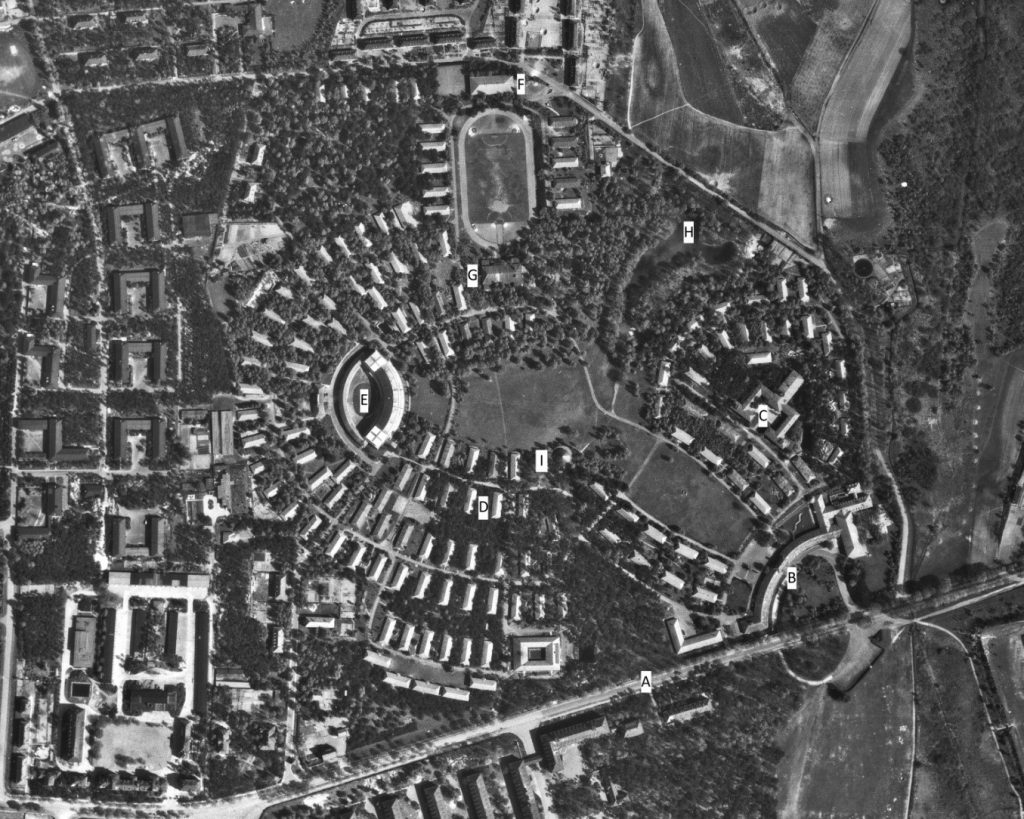
Figure 1. A reconnaissance photograph of the village on April 20, 1945, three days before capture by the Soviet army. [12]
The Olympic Village, post games
At the conclusion of the XI Olympiad, minor alterations were made to the village and in December 1936 the army divided it into two, one section continuing to be called Olympisches Dorf, becoming the home of the Heeres-Infanterieschule Döberitz (the Infantry Officer Training College) and the 1 Battalion of the Infantry Training Regiment. The other section, the Speisehaus, was turned into a military hospital, the Olympia-Lazarett or Reserve Hospital 101 Döberitz, which opened in August 1937.[15] The German Army continued to occupy the site until it was over-run by the Soviet Army on April 23, 1945, ‘almost without a fight’.[16] The village suffered very little damage during the war and numerous buildings were taken over by refugees from Berlin as emergency quarters until 1947, some until 1949.[17] However in 1946 the 1 Soviet Mechanized Division began moving into the village and in 1949 it became the Soviet Army Olympisches Dorf garrison headquarters. Over the next four decades it housed a variety of Soviet forces including tank, motorised rifle, and reconnaissance regiments. In addition, from 1961 it housed the 315 Independent Missile Battalion equipped with FROG missiles with tactical nuclear warheads; these weapons were of limited range and accuracy and only capable of reaching Berlin rather than West Germany from the village area. The probable targets were allied bases in Berlin. The FROGs were replaced by more accurate SS-21 missiles in 1981 and the 315 was transferred to Fürstenwalde, some 44 miles to the south-west in 1988.
After the reunification of Germany in 1990, the Soviets withdrew from the Olympisches Dorf in 1992 and the abandoned village was gradually reclaimed by nature. In 2005, the Deutsche Kreditbank AG, the DKB, took ownership of the derelict site to harmonize redevelopment, history and nature. By 2015, after stabilizing and making safe the grounds and remaining buildings, the DKB were ready to accept redevelopment proposals for specific tranches of the site.
‘Bridging the Gap’
In 2014, Wolfgang Schnurr founded Palis Advisory GmbH as a ‘consulting boutique’ at the interface of business, science and the arts helping to design and manage strategic projects. Schnurr incorporated an art initiative, ‘Bridging the Gap’, to bring together people, things and places temporally, geographically and artistically. This was planned to ‘reflect different perspectives on current and historical phenomena and broaden horizons’.[18] Through his knowledge of the Olympisches Dorf and the redevelopment proposals, Schnurr realized that much of the charm of the lonely site, steeped in culture and history, could be lost and proposed a thematically based art project within the ‘Bridging the gap’ initiative believing that artists’ eyes could discover different perspectives on the places and spaces. Four artists were identified reflected the ‘Bridging the Gap’ ethos of bringing together artists from various fields and backgrounds. Three were British, Margaret Cahill, David Gledhill and Peter Lewis, and one German, Wolf Bertram Becker. Schnurr, through personal relationships with the DKB management, organized unrestricted access for the artists to the site for three days. This allowed them to explore the village, interacting and engaging with each other, ‘soaking up the unique atmosphere emanating from the location’ and absorbing its historical and current issues.[19] Schnurr considers that though the artists converted their impressions into art in their own studios over the ten months following their visit to the Olympisches Dorf, an integral part of the project was comprised of personal relations established at the site. He cited William Baziotes idea that ‘there was an unconscious collaboration between artists. Whether you agreed or disagreed was of no consequence. It was exciting and you were compelled to paint over your head…What does happen when artists meet is that we are able to see more clearly the unfolding of character as time goes on’.[20] The completed works were brought together for a six-week exhibition staged in the entrance atrium of the DKB Berlin headquarters coinciding with the Rio Olympics.
The atrium, containing the building’s reception area, is glass-roofed and has a large open floor space surrounded by a number of glass-walled meeting rooms. Schnurr, who curated the exhibition, sought to engage new audiences including DKB staff and visitors as well as people going to the exhibition. Guided tours were held for DKB staff under the banner of ‘art@lunchtime’ and presentations and talks were given for both staff and the public. Schnurr explained:
Apart from making full use of the space a key concern was to open up new perspectives for the audience looking at the art work. This objective was achieved by placing the art work on partition walls, easels, and in purpose-built display cabinets as important design elements and placing them strategically across the atrium. It allowed visitors to wander around and gain a three-dimensional impression of the artwork. The idea of opening up new spaces, both literally and metaphorically, was underscored by delimiting the spatial boundaries and making use of the adjacent meeting rooms as exhibition space for the artwork. In this way a space was created that denotes key elements akin to a prototypical village.[21]
Through this arrangement, Schnurr attempted to give the impression to viewers that they were wandering around the village at various times of its life, viewing exhibits from a variety of angles and even heights. Items of diverse media were grouped providing opportunities for intertextuality, one text’s meaning shifting through interconnection with another text as viewers contemplated each piece and combined reflections allowing layers of depth to be added depending on prior knowledge and understanding. On entering the exhibition the visitor, like the athletes in 1936, encountered the Olympisches Dorf reception building (Fig. 2).[22]
In 1936 upon arrival at the village, the teams were ceremoniously met by the Commandant just outside the main entrance, an elaborate gateway through the centre of the reception building (Fig. 4).[23] Their flag was hoisted, anthem played, accreditations issued, and they were then led into the village to their accommodation by officials who would remain with them for the duration of their stay.[24] The press and public could view these ceremonies as they were outside the village. The reception building, constructed in a quadrant form, became a social hub throughout the Games as athletes and officials could meet friends and family, journalists and the public who were not allowed into the ‘Womanless Village’. The village restaurant and several shops were situated inside the building. One shop sold photographic materials and offered rapid film processing, and another ‘shop for sporting articles was full of customers from morning till night. German training uniforms, shoes and other sporting articles were soon much in evidence throughout the Village’.[25] The restaurant was accessible to the public and featured an outdoor terrace giving views across the expansive landscape. A special correspondent from the Daily Herald reported:
The Olympic Village is one big sun-bathing colony. Half-naked athletes are lying in deck chairs all over the place. Only the athletes and officials are allowed inside the gates. The grounds appear to be as extensive as Regent’s Park and much more beautiful. Red-roofed bungalows are dotted about among the many pine trees and along the shores of miniature artificial lakes. It is an inspiring sight.[26]
The reception building survived to the very end of the Second World War only to be accidentally destroyed by Soviet soldiers celebrating victory with incendiary rockets.[27]
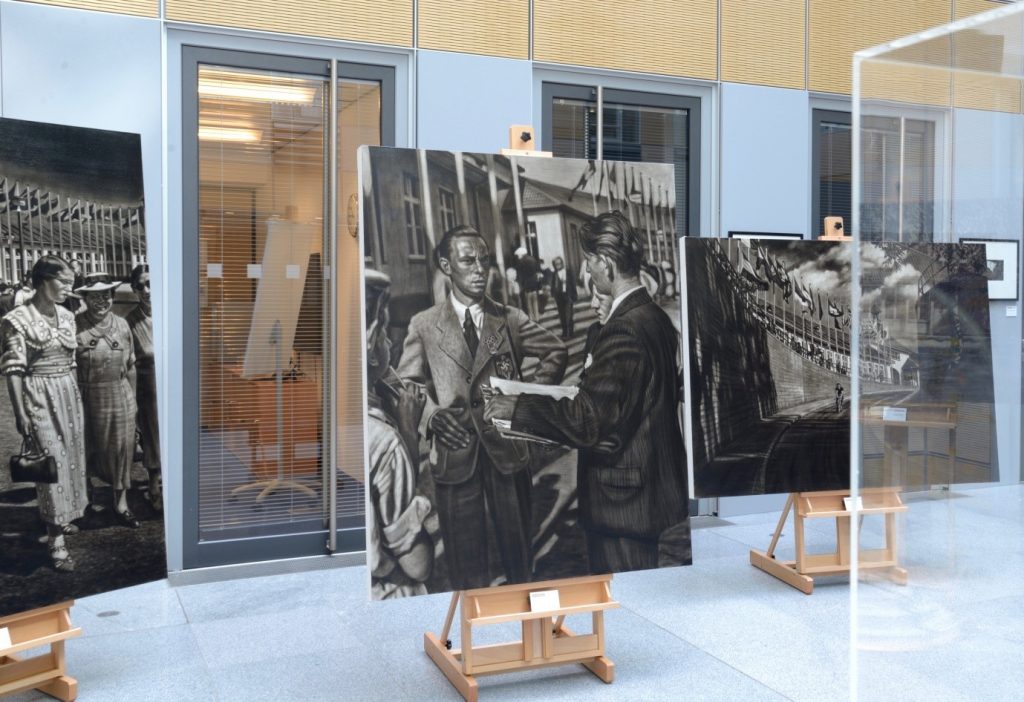
Figure 2. The exhibition in DKB headquarters in Berlin-Mitte; the paintings in the foreground, by David Gledhill, show the reception area from outside the village. [28]
David Gledhill was the only artist to portray the reception building and his paintings greeted people at the exhibition entrance. His work represents a contemporary form of history painting seeking to bridge the various phases of the village’s life by drawing on both old photographs and his own documentation of the site. He purchased historic amateur photographs of the village from eBay after his visit and then produced a series of paintings, films and prints seeking to ‘reintegrate a sense of the significance of place and social being in history’ reminding the viewer that the past can still be sensed in the spaces of the present. He found that the old ‘photographs often seemed to contain portents of the future that are available to be read off their iconic content using the benefit of hindsight’. He developed paintings from these photographs that whilst translating the source images ‘verbatim as it were, not adding, omitting or distorting anything’ augmented them by increasing the tonal contrast and changing focal points. In this way Gledhill attempted to communicate ‘the atmospherics and poetics of the site and convey the different ideological forces at play in politics, society and culture over time’ and thereby ‘enhancing this latent meaning’.[29]
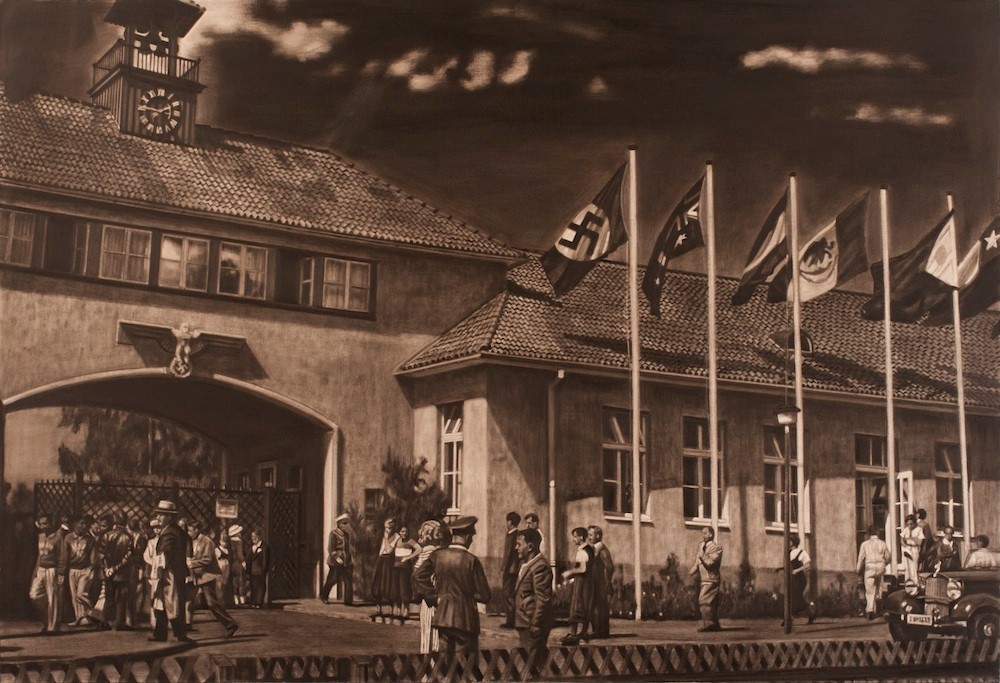
Figure 3. Olympisches Dorf V David Gledhill, oil on canvas. [30]
Most of the other figures have their backs to the cyclists ignorant of the potential future abyss. On a later visit to the location, Gledhill was amazed that the rusted stumps of the railings in the top right hand corner of the painting were still extant, he found it ‘electrifying to be able to grab hold of these relics of the pre-war era, having spent weeks painting them!’[32]
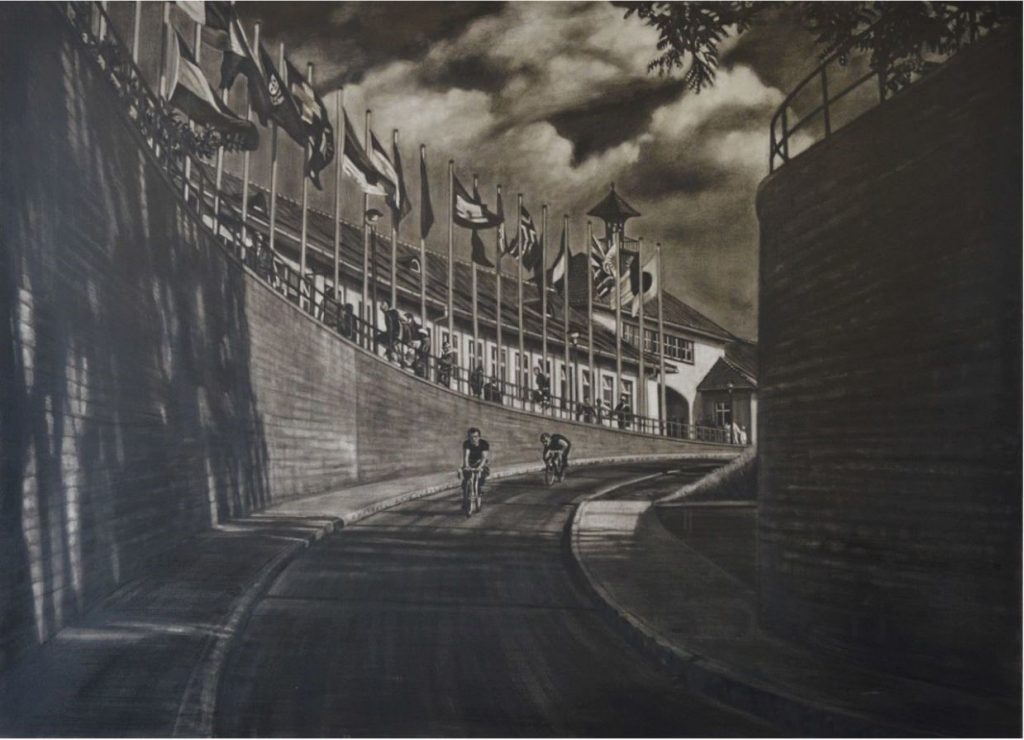
Figure 4. Olympisches Dorf III David Gledhill, oil on canvas. [33]
Several attempts to redevelop the site by the local government in the late twentieth-century failed partly because the site was inextricably bound up with Nazism, resulting in most Germans avoiding it, but, as the Daily Mail noted in 2012, it was a place that lives and breathes sportsmanship and history, side by side. However German history is something Germans have shunned, no doubt Gledhill’s Olympisches Dorf I, the central image in Figure 2, raised ghosts amongst some viewers.[35] A German athlete, with Swastika team badge, looks displeased to be waylaid by a journalist and photographed by a member of the public outside the village entrance.
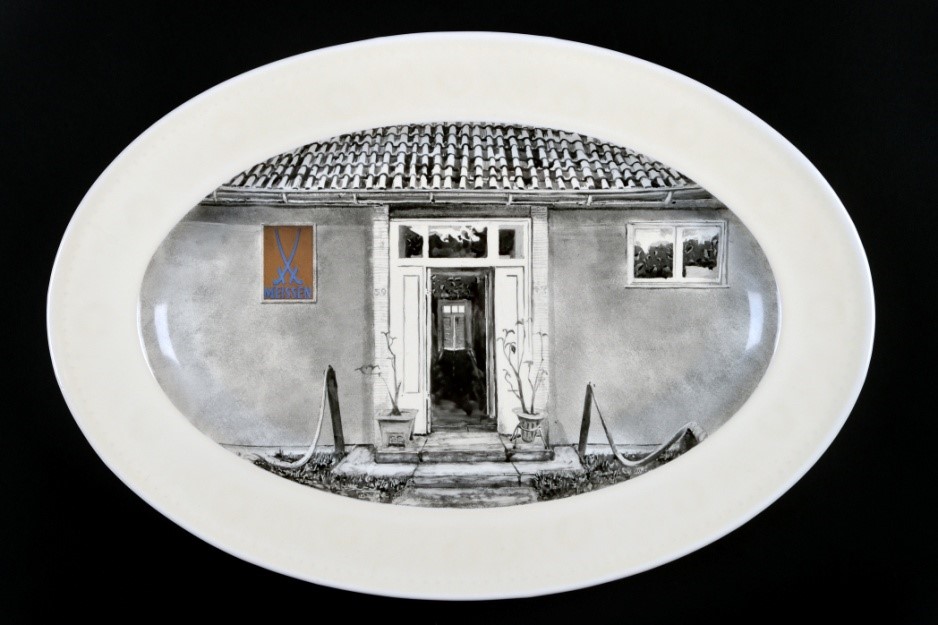
Figure 5. Meissen House Peter Lewis, ceramic media. [36]
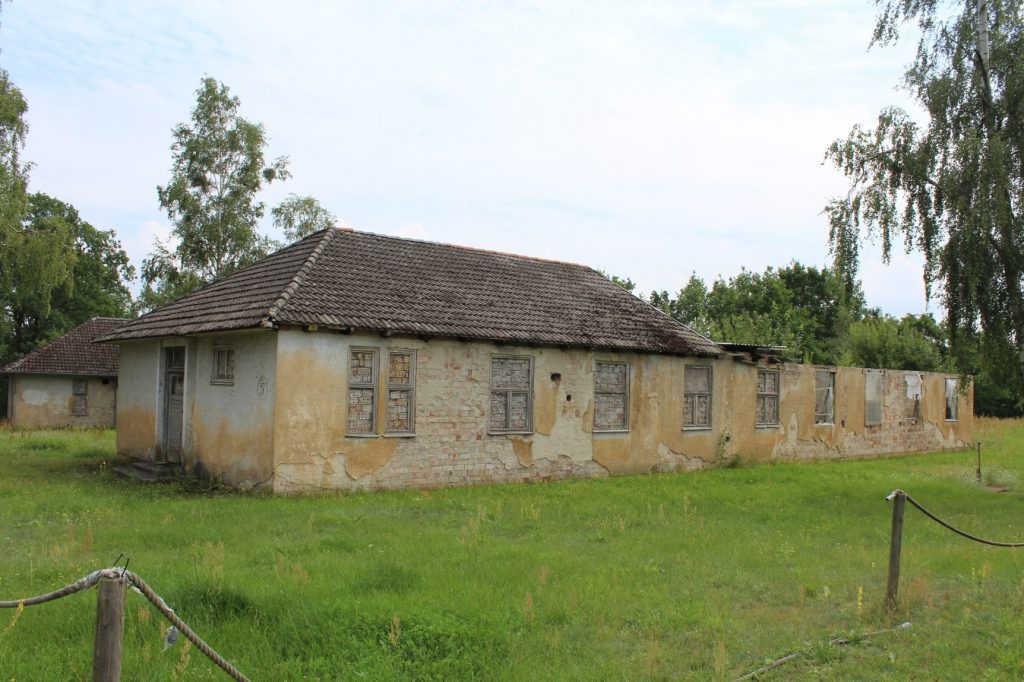
Figure 6. Derelict accommodation block next door to renovated example purportedly where Jesse Owens stayed.
Owens became the undisputed hero of the 1936 Games, his four gold medals ‘achieved with a grace of style and self-effacing modesty that won him the adulation of the Berlin crowds’.[40] He seemed to personify all that contradicted Hitler and Nazi ideology as he shattered the ‘myth of Aryan racial supremacy’.[41] Even in the twenty-first century Owens remains a significant historical figure, recalled every four years by the media often utilising footage from Riefenstahl’s Olympia. As Mackenzie points out ‘Owens dominates the film, at least the track and field segment, as he dominated the event in real life; he is filmed beautifully, and his athletic performance, captured for posterity by Riefenstahl’s cameramen in a now famous sequence, is magnificent’.[42] Owens is one of the athletes captured by Lewis in his resin, ceramic and mixed media work (Fig. 7). Owens recalled that when ‘running on the track back at the athletes’ village, he felt almost weightless, as if gravity were no longer exercising its grasp on his arms and legs and torso’.[43] The American sprinters actually trained at the village to appreciative audiences; after watching Owens, Walter Rangley, a member of the British sprint relay team, sent a cheery postcard to his brother Frank informing him that ‘we are all charmed with the village here – it is really marvellous – and we are all in the pink’ but concluded that ‘there is only one sprinter in the World’.[44]
Conflict, belief and political expediency are central to the work of Peter Lewis. His artwork reflects an on-going dialogue of the social and political realities in society, including the influence of control and power. The diversity of his artwork is expressed in the variety of materials and processes he uses to create his objects as well as in the broad range of themes he addresses. Like Gledhill, Lewis is a habitué of flea markets and antique shops in search of inspiration; at one Berlin shop he found original Olympic stamps which he converted into digital transfers and fired into the ceramic bases of these works (Fig. 7). Under the stamps runs the motto emblazoned on the Olympic Bell at the Olympic Stadium; Ich rufe die Jugend der Welt. The bases also feature the podium levels, bronze, silver and gold. The flecks in the resin surrounding the athletes are paint and newspaper scrapings from the walls of the Speisehaus, Hindenburghaus and the swimming pool; buildings the athletes would have used thereby fixing some of the site’s fabric and history in the present and bridging the gap between moments in time.[45]
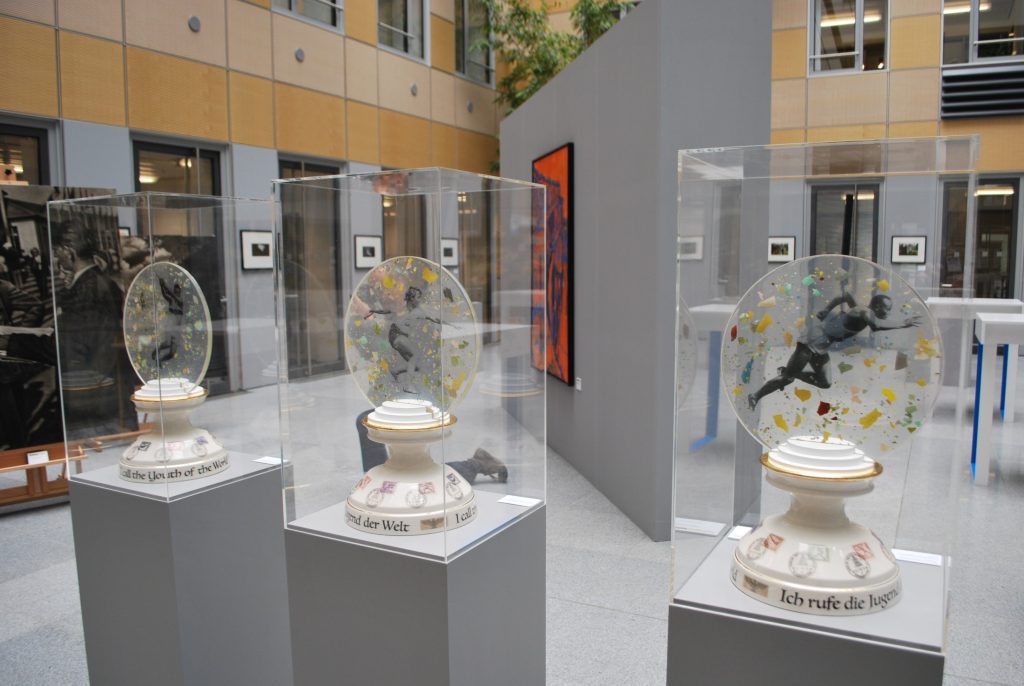
Figure 7. Hammer: K. Hein; Discus: J. Wajs-Marcinkiewicz; Sprint: J. Owens Peter Lewis, Ceramic, resin and mixed media. [46]
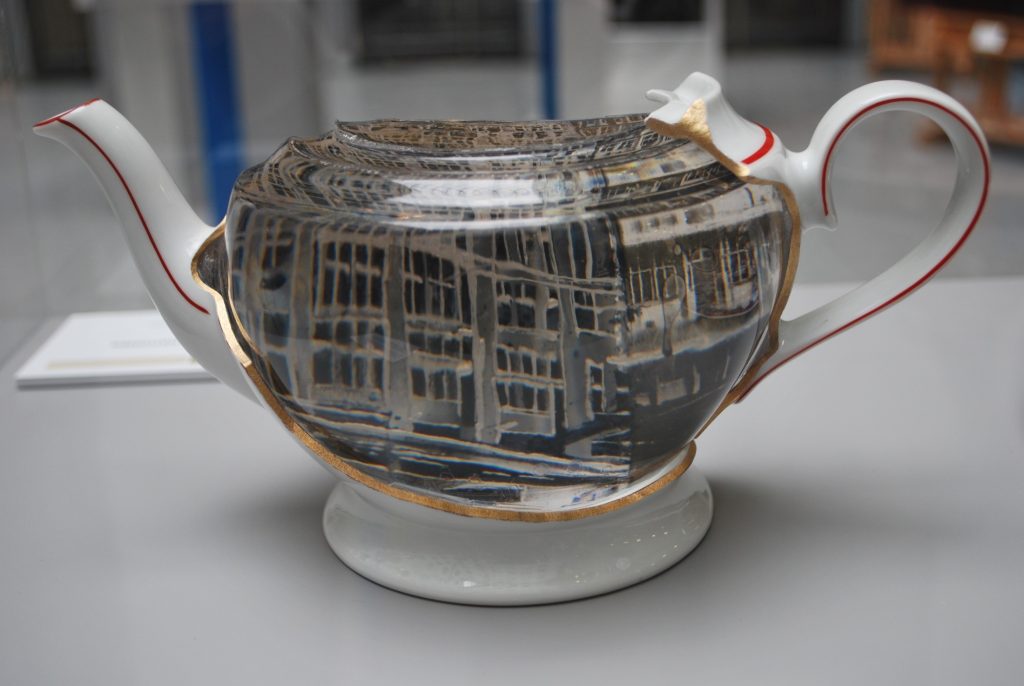
Figure 8. Speisehaus der Nationen Peter Lewis, ceramic media and etched resin. [50]
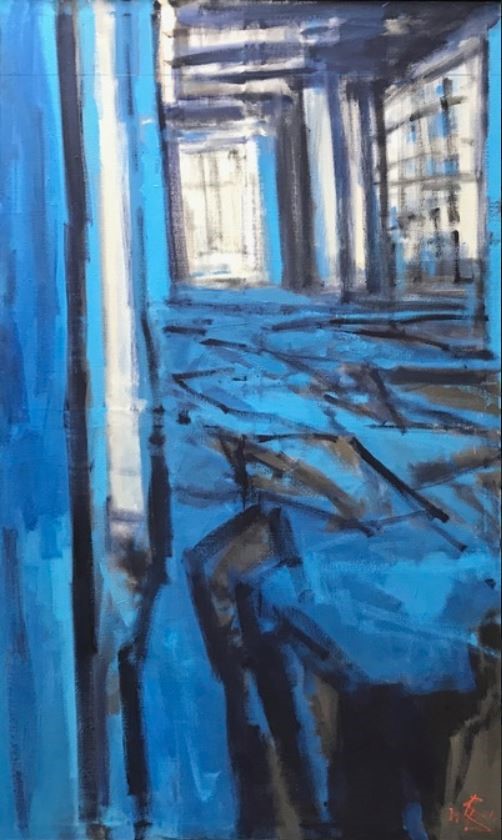
Figure 9. Speisehaus I Wolf Bertram Becker, oil on canvas. [53]
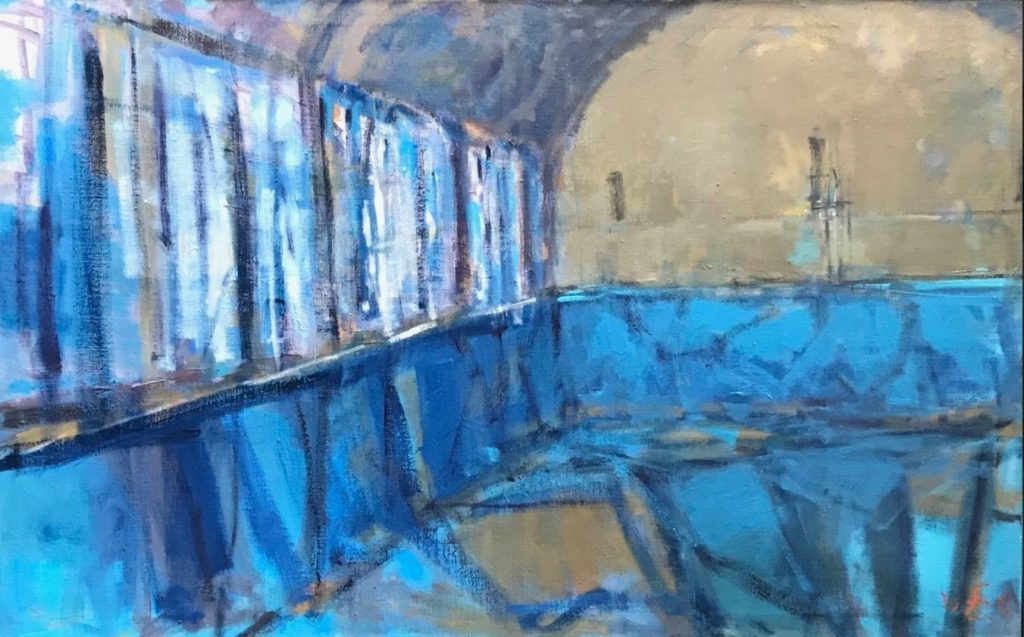
Figure 10. Schwimmbad IV Wolf Bertram Becker, oil on canvas. [54]
Becker focussed on two buildings, the Speisehaus and the swimming pool, the empty pool, broken diving platform, and domed ceiling offering a variety of special perspectives. In Schwimmbad IV, he used a golden honey palette to symbolise the decay of plaster and missing tiles reflecting his view that the village has ‘collapsed under the burden of its own history’ (Fig. 10).[58] Up until their departure in 1992, the Soviet commander was using the sauna beyond the end wall, emerging through the central door onto the diving platform to plunge into the cold water, the area central heating system having broken down years before. Although the socio-cultural centre, the Hindenburghaus, was of less architectural interest to Becker it contains strong vertical and horizontal lines allowing him to exaggerate the proportions to increase the impact of the theatre. The emphasis on the linear references reveals a conscious effort to override traditional perspectives of the pictorial space through parallel surfaces generating rhythmic accents; the stage can be seen on the left (Fig. 11).[59]
In his choice of palette, Becker has attempted to produce a warm emptiness imagining the echoes of the hubbub of languages and the multihued vibrant colours of tracksuits and national uniforms in the packed theatre awaiting the evening’s show. During the Games, up to 1,000 people were accommodated to see the live entertainment, mainly musical to avoid language problems, and special screenings of films, including rushes of the Olympic events of the day before. Live Olympic events could be watched in a separate TV lounge.[60] Dhyan Chand, the captain of the Indian hockey team remembered the international flavour of the Hindenburghaus:
Every evening after dinner, we used to pass two hours in the house, with our sweatsuits on or any other informal dress, cheering, clapping and joking. The Italians were the most noisy and none could beat them in this respect. A sight of a pretty girl dancing gracefully was always enough to rouse our Italian friends to the highest pitch of enjoyment, which sometimes appeared too far to our Eastern minds.[61]
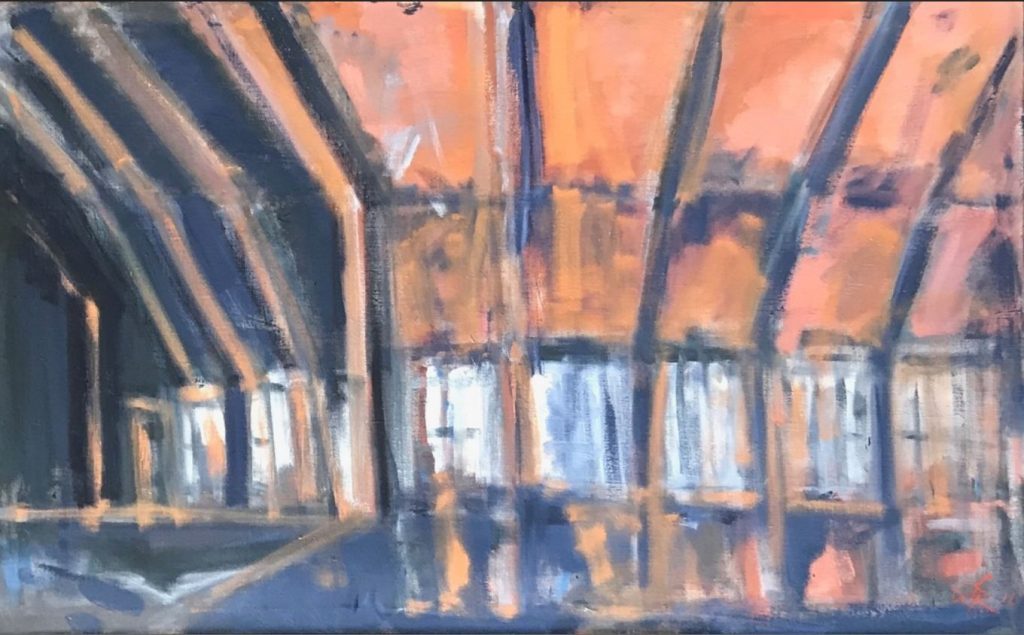
Figure 11. Hindenburghaus Stage Wolf Bertram Becker, oil on canvas. [62]
The house is the long abandoned commandant’s quarters that stands alone, closed and shuttered, last used as a kindergarten in Soviet times. Cahill was drawn to this house and took many photographs from different aspects noting that ‘it definitely had an atmosphere and a suggestion of the “ghosts” that had passed through’. The mist, boat and cranes remind the viewer that there was, until at least 1992, a beautiful artificial lake on the site; Russian soldiers remember it fondly along with the two swans that lived there. The mist, hiding the water apart from a few dark and enigmatic patches, provides stillness and mystery symbolizing the elusive nature of place and memory and intended to trigger viewers to reflect upon their own individual and collective multi-layered narratives whilst allowing new perspectives and contexts to emerge. For Cahill cranes symbolize awakening and renewal and also reflect the ephemeral nature of life.
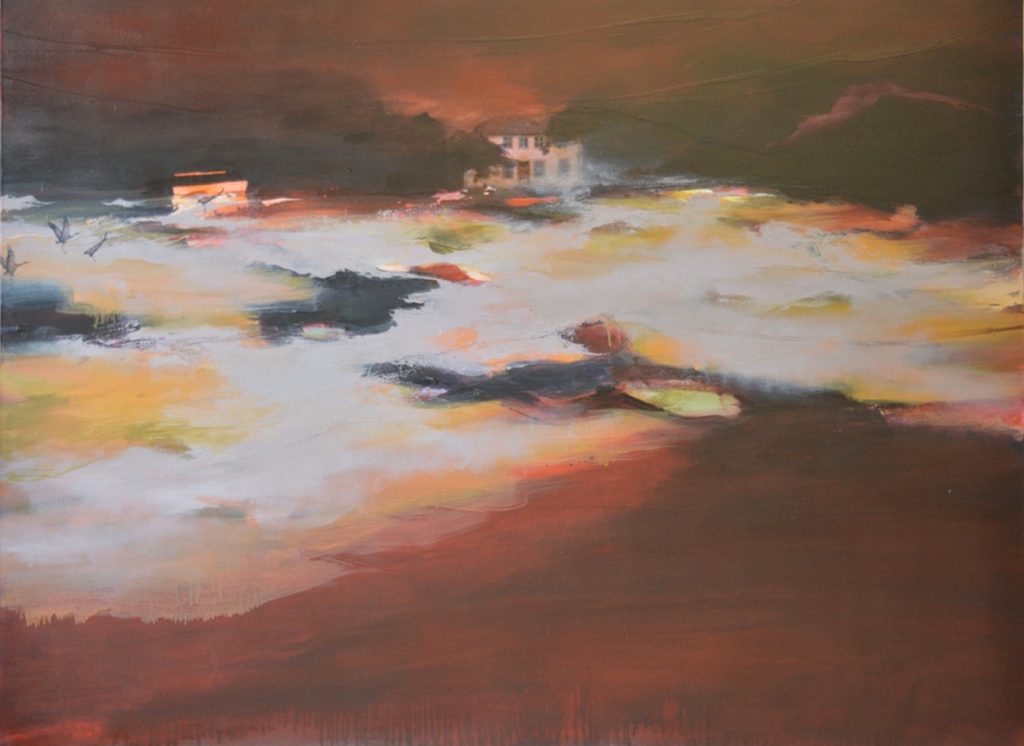
Figure 12. Hidden Lake Margaret Cahill, oil and mixed media on canvas.[66]
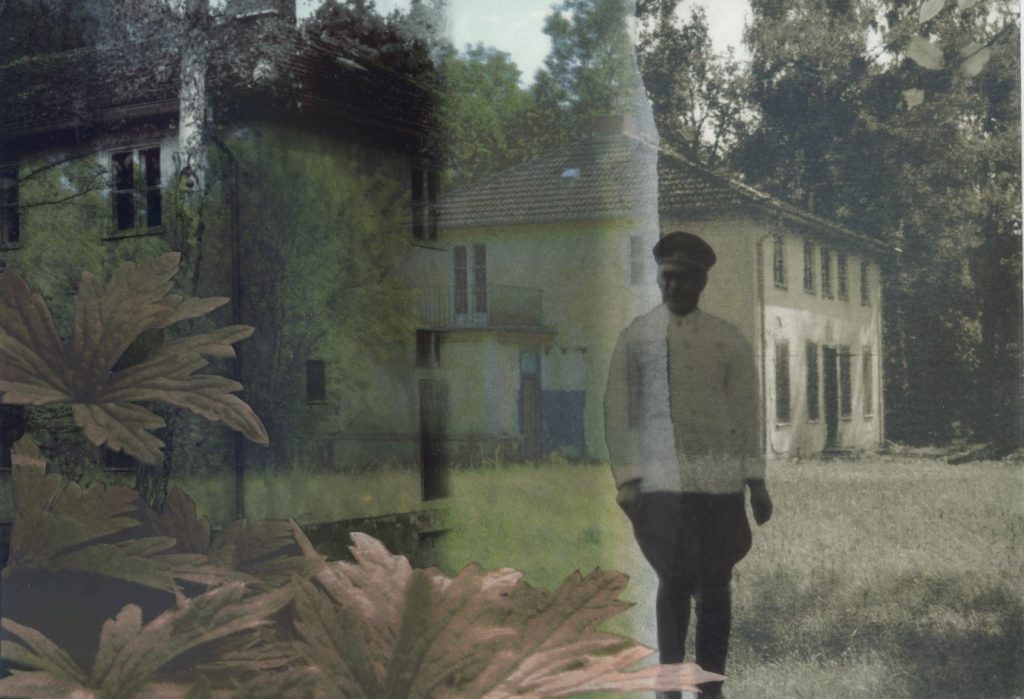
Figure 13. Memory Still 10 Margaret Cahill, mixed media collage. [68]
Cahill’s focus on the more forgotten corners of the site, away from the signature buildings, ended the designed route through the DKB exhibition. At the conclusion of the exhibition at the DKB Berlin headquarters, the artworks were moved to the sports hall at the Olympisches Dorf for Germany’s ‘Day of the Open Monument’ for a one day showing on September 11, 2016. The works were finally shown together at the neo:gallery23 in Bolton in March and April 2017.[73]
The future Olympisches Dorf
The 1936 Olympic Games were a landmark in political as well as sports history. William L. Shirer, a journalist for the Universal Service, reported after the Games that ‘I’m afraid the Nazis have succeeded with their propaganda…First, they have run the Games on a lavish scale never before experienced, and this has appealed to the athletes’.[74] Certainly the biographies and autobiographies of athletes who participated in these games suggest that they enjoyed their weeks in the village and in Berlin. They noticed the number of uniforms present all around them and were aware of the permanent purpose of their living quarters but the U.S. 5000 metre runner, Louis Zamperini, remarked in 1988 that he had ‘never heard of any Olympics where athletes were treated with better care than in the 1936 Games’.[75] The idea of an Olympic Village for the athletes was first realized in Paris in 1924 but in 1936 Diem, March and Fürstner constructed a village that set ‘a high standard for all future Olympic Villages, this one was a kind of temporary self-contained town’.[76]
Wolf Bertram Becker wrote that the village is a ‘remarkable arena of German history with layers of narratives, hidden stories and echoes and traces of the people who inhabited these spaces’.[77] To the project artists visiting the village with a ‘backdrop of beautiful summer weather, the Olympic spirit of old was almost palpable’ but ‘at the same time the place holds relics of the heritage left by the Nazi and Russian military occupation’.[78] The forsaken sports facilities, the remnants of the village green, the vanished lake, the abandoned signature buildings, and the renovated and neglected living quarters all proved to be valuable inspirational sources for the artists. The work produced reflects the different narratives the Olympisches Dorf triggered and nourished in each artist as they created images of the site before developers intrude into the shrine of the place’s former Olympic inhabitants. The artists invite viewers to engage with their work, to communicate with it, and to reflect and create their own narratives assisted by the common denominator of the village itself, portrayed in a variety of media and styles. They revealed the possibilities of Becker’s ‘layers of narratives, hidden stories’ and the imprints of many lives interacting with the landscape over time. People create ghosts to feel a social connection to the past but their memories, knowledge and experiences mean that their ghosts are unique, a social construct. During his Berlin sojourn, David Bowie noted that ‘all art is unstable. Its meaning is not necessarily that implied by the author. There is no authoritative voice. There are only multiple readings’.[79]
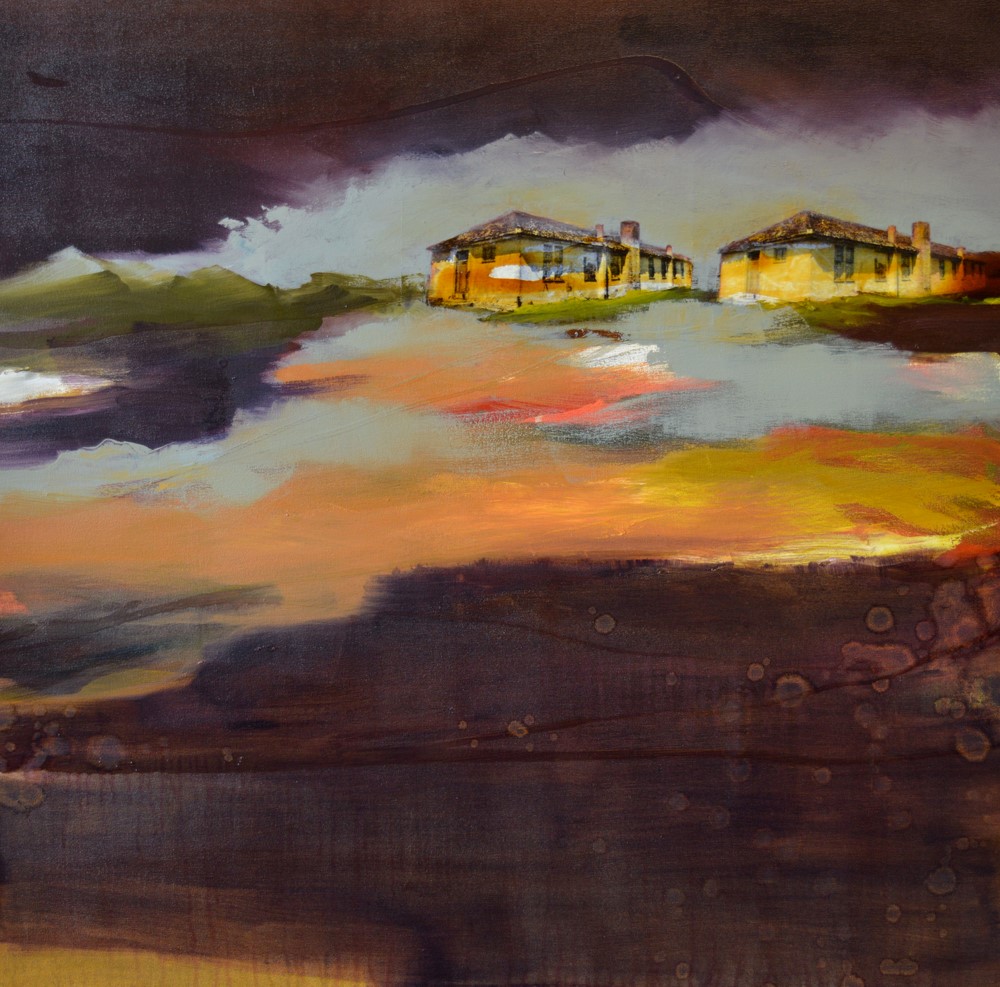
Figure 14. Dark Flowers Margaret Cahill, collage. [80]
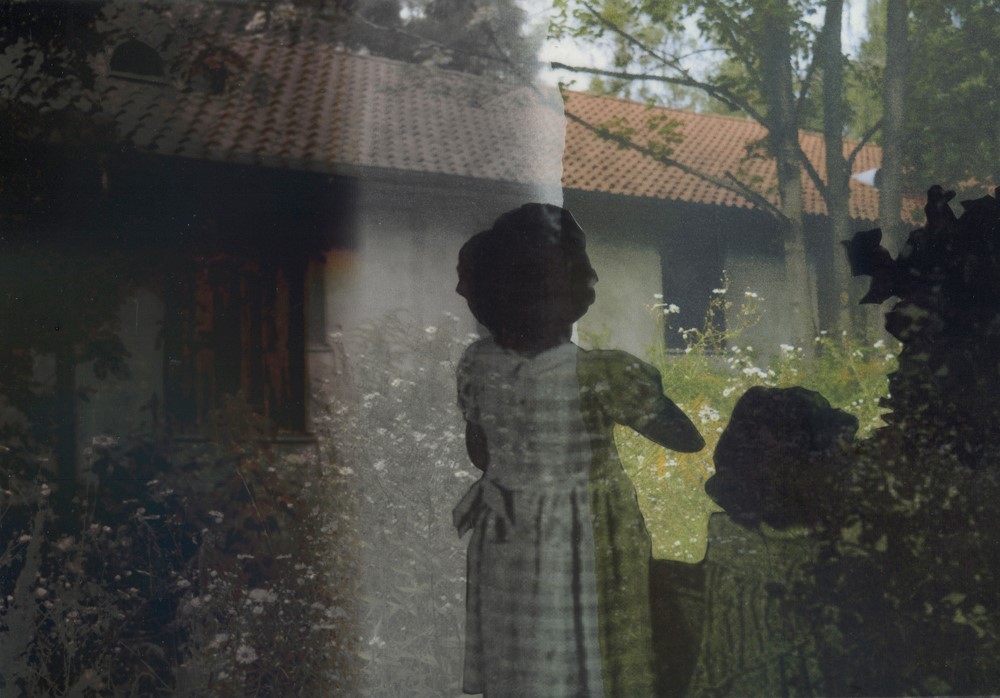
Figure 15. Memory Still 1 Margaret Cahill, collage. [84]
As Rippon remarked about the 1936 facilities ‘it is impossible to visit and not to feel the ghosts of 1936’.[86] Standing alone on the balcony of the Speisehaus looking across the empty and silent village, the author experienced ‘images and echoes from the seven decades past’.[87] After all Jesse Owens slept here.
References
[1] Michael Mayerfeld Bell, ‘The Ghosts of Place’, Theory and Society 26, no. 6 (1997): 815.
[2] The history of the 1936 Olympic Games has been a popular research topic resulting in a plethora of journal articles and several books, these include Duff Hart-Davis, Hitler’s Games: The 1936 Olympics (London: Harper & Row, 1986); Oliver Hilmes, Berlin 1936: Sixteen Days in August (London: Bodley Head, 2018); Christopher Hilton, Hitler’s Olympics: The 1936 Berlin Olympic Games (Stroud: Sutton, 2008); Emanuel Hübner, Olympia in Berlin (München: Morisel Verlag, 2017); David Clay Large, Nazi Games: The Olympics of 1936 (New York: W.W. Norton, 2007); Richard D. Mandell, The Nazi Olympics (UK: Endeavour Press, 2016); Anton Rippon, Hitler’s Olympics: The Story of the 1936 Nazi Games (Barnsley: Pen & Sword, 2006); Guy Walters, Berlin Games: How Hitler Stole the Olympic Dream (London: John Murray, 2006).
[3] Organisationskomitee für Die XI. Olympiade Berlin 1936 E.V., The XIth Olympic Games Berlin, 1936 Official Report, Volume 1 (Berlin: Wilhelm Limpert, 1937), 47. The 1933 IOC session also dealt with the change of government in Germany since the awarding of the Games, Hitler having been appointed Chancellor by President Paul von Hindenburg on January 30, 1933 effectively ending the Weimar Republic. See R.S. Courcy-Laffan, ‘International Olympic Committee: Session of 1933’, Official Bulletin of the International Olympic Committee 24 (1933).
[4] Monika Meyer-Künzel, ‘Berlin 1936’, in Olympic Cities: City Agendas, Planning and the World’s Games, 1896-2012, ed. John R. Gold and Margaret M. Gold (London: Routledge, 2007).
[5] Von Reichenau was an active member of the Berlin Sport Club of which Carl Diem, the Secretary General of the Berlin Organizing Committee, was president. He accompanied Diem on a DOA trip to America in 1913 to study American sport. Von Reichenau had played both football and rugby, and had been very good at the javelin, discus and shot; he became a tennis player in later life. He replaced Theodore Lewald as a German IOC member in 1938. See Karl Lennartz, ‘Walter von Reichenau: Officer, Sportsman, IOC member, War Criminal’, Journal of Olympic History 14, no. 1 (2006): 27-41.
[6] Albert Seaton, The German Army 1933-1945 (New York: Meridian, 1985).
[7] Organisationskomitee für Die XI. Olympiade, The XIth Olympic Games Berlin.
[8] A fleet of 170 buses was employed to ferry the male athletes between the village and the Reich Sports Field, see Rippon, Hitler’s Olympics, 120.
[9] Hart-Davis, Hitler’s Games, 50.
[10] Emanuel Hübner, ‘Haus Schandau: Ein Mannschaftsgebäude des Olympischen Dorfes von 1936’, in NS-Architektur. Macht und Symbolpolitik, ed. Tilman Harlander and Wolfram Pyta (Münster: Lit-Verlag, 2011).
[11] Organisationskomitee für Die XI. Olympiade, The XIth Olympic Games Berlin; Hilton, Hitler’s Olympics; An overview of the village can be seen in the 4 minute film ‘Berlin 1936 Olympics’, World Film Heritage, https://www.youtube.com/watch?v=QYwpDAlpkdk (accessed July 28, 2017).
[12] Image courtesy of Landesluftbildsammelstelle der Landesvermessung und Geobasisinformation Brandenburg. The Olympisches Dorf is surprisingly undamaged, the Elstal shunting yards, cropped out of the image just to the north west, were intensively bombed on April 20, 1945, a stray stick of bombs can be seen to have impacted just to the east of the village. Note the large red crosses on the Speisehaus, a chord through the centre of the ellipse along the semi-minor axis and extended to the east goes to the Olympic Stadium and led to the Speisehaus’ nickname as ‘the eye’.
[13] Roland Kopp, Wolfgang Fürstner (1896-1936); Der erste Kommandant des Olympischen Dorfes von 1936 (Frankfurt am Main: Peter Lang, 2009).
[14] Hilton, Hitler’s Olympics, believes these were an advance party for the full team of 191 athletes who were training and acclimatising in Helsinki. Organisationskomitee für Die XI. Olympiade The XIth Olympic Games Berlin.
[15] Emanuel Hübner, ‘The Olympic Village of 1936: Insights into Planning and Construction Process’, The International Journal of the History of Sport 31, no. 12 (2014): 1444-1461.
[16] Юрий Анастасиев, comment on ‘эльсталь’, comment posted December 2, 2002, http://nazadvgsvg.ru/viewtopic.php?id=123&p=54 (accessed October 28, 2017); Wilhelm Willemer, ‘The German Defence of Berlin, 1945’, 007483-MS P-136 Report for HQ USAREUR, 1954. http://www.allworldwars.com/The-German-Defense-of-Berlin-1945-by-Wilhelm-Willemer.html (accessed October 27, 2017).
[17] Martin Kaule, Olympiastadion Berlin und Olympisches Dorf Estal (Berlin: Christoph Links Verlag, 2014).
[18] Palis Advisory GmbH, Berlin, ‘Bridging the Gap’, https://palisadvisory.berlin/Start/Kunst/ (accessed June 22, 2018).
[19] Wolfgang Schnurr (Managing Director, Palis Advisory), in discussion with the author at the Deutsch Centre, Manchester, February 15, 2018. Since DKB took control of the site, it has been kept secure with access only granted to a few school groups and the very occasional public ‘open day’. Schnurr commented that it had ‘fallen into a kind of sleeping beauty slumber’.
[20] Baziotes was part of the American Abstract Expressionist circle and was central to artist debate in New York in the 1940s. Schnurr is quoting from William Baziotes, ‘Symposium: The Creative Process’, Art Digest 28, no. 8 (January 15, 1954): 33.
[21] Schnurr, in discussion with the author.
[22] Schnurr, in discussion with the author.
[23] The village motto ‘To the Youth of the World’ was inscribed above the gate and it was crowned by a clock tower with a set of chimes which played the principle motif of the Olympic Hymn each hour.
[24] Walters, Berlin Games; Mandell, The Nazi Olympics.
[25] Organisationskomitee für die XI. Olympiade, The XIth Olympic Games Berlin, 211-212.
[26] Daily Herald, August 1, 1936.
[27] In Figure 1 the building can be clearly seen; Михаил Л, comment on ‘олимпишесдорф’, comment posted September 19, 2010, http://nazadvgsvg.ru/viewtopic.php?id=126&p=37 (accessed October 28, 2017).
[28] Image courtesy of Palis Advisory GmbH, Berlin, https://palisadvisory.berlin
[29] David Gledhill, (artist, ‘Bridging the Gap’ project), in discussion with the author at Rogue Studios, Manchester, January 26, 2018; Palis Advisory GmbH, Berlin, Olydo.Berlin.2016 (Berlin: Palis Advisory GmbH, Berlin, 2016), 19
[30] Image courtesy of David Gledhill, http://www.davidgledhill.co.uk.
[31] David Gledhill, ‘David Gledhill’, in Berlin 1936: Olympic Village Project, ed. David Gledhill and Ged Young (Bolton: University of Bolton, 2017), 41.
[32] David Gledhill, email to the author, July 24, 2018.
[33] Image courtesy of David Gledhill, http://www.davidgledhill.co.uk.
[34] Gledhill, in discussion with the author; Bell, ‘The Ghosts of Place’, 813.
[35] Daily Mail, ‘Adolf Hitler’s Olympic Village of 1936: Conservationists race to save the forgotten relic of the infamous ‘Nazi Games’, June 30, 2012.
[36] Image courtesy of Peter Lewis, http://peterlewis-ceramics.com.
[37] Hart-Davis, Hitler’s Games, 185.
[38] Hilton, Hitler’s Olympics.
[39] Emanuel Hübner in discussion with the author at Olympisches Dorf, Berlin, August 2, 2017.
[40] Bill Murray, ‘Berlin in 1936: Old and New Work on the Nazi Olympics,’ The International Journal of the History of Sport 9, no. 1 (1992): 35.
[41] International Olympic Committee, Olympic Summer Games (Lausanne; Historical Archives Olympic Studies Centre, 2011), 29; Mandell, The Nazi Olympics; D.A. Kass, ‘The Issue of Racism at the 1936 Olympics’, Journal of Sport History 3, no. 3 (1976): 223.
[42] Michael Mackenzie, ‘From Athens to Berlin: The 1936 Olympics and Leni Riefenstahl’s Olympia’, Critical Inquiry 29, no. 2 (2003): 312.
[43] Jeremy Schaap, Triumph: Jesse Owens & Hitler’s Olympics (Rearsby: W F Howes, 2015), 264.
[44] Bob Phillips, The Iron in his Soul: Bill Roberts and Manchester’s Sporting Heritage (Manchester: Parrs Wood Press, 2002), 144. Rangeley was in the 4 x 100 metres relay team that was eliminated in the first round, he had won silver at Paris in 1924 in the same event and individual silver in the 200 at Amsterdam in 1928 where he also won a bronze with the 4 x 100 relay team.
[45] The Soviets stuck newspapers onto walls over the original paint, probably for extra-insulation, and then either painted or wallpapered over the top.
[46] Image courtesy of Palis Advisory GmbH, Berlin, https://palisadvisory.berlin.
[47] Organisationskomitee für Die XI. Olympiade, The XIth Olympic Games Berlin.
[48] The lunchtime concerts were frequently provided by the Kieler Matrosenkapelle, the Kiel Naval Band, and Maritta Adam-Tkalec, ‘Berlin in Historischen Aufnahmen: Wie das Olympische Dorf Entstand’, Berliner Zeitung, July 6, 2017, https://www.berliner-zeitung.de/berlin/berlin-in-historischen-aufnahmen-wie-das-olympische-dorf-entstand-27912258 (accessed October 7, 2017).
[49] Schaap, Triumph, 222.
[50] Image courtesy of Peter Lewis, http://peterlewis-ceramics.com.
[51] Palis Advisory GmbH, Olydo.Berlin.2016 (2016), 9.
[52] Peter Lewis (artist, ‘Bridging the Gap’ project), in discussion with the author at the artist’s studio, Rhos on Sea, January 26, 2018.
[53] Image courtesy of Wolf Bertram Becker, http://www.wolfbertrambecker.com.
[54] Ibid.
[55] Angelika Steinmetz-Oppelland, ‘The Transformation of the World through Painting’ in the catalogue of the exhibition Wolf Bertram Becker: Long Distance in the Kunsthalle “Harry Graf Kessler”, Weimar (Berlin: VG Bild-Kunst, 2016), 6-7.
[56] Wolf Bertram Becker (artist, ‘Bridging the Gap’ project), in discussion with the author at the artist’s studio, Weimar, January 16, 2018.
[57] Palis Advisory GmbH, Olydo.Berlin.2016 (2016), 29.
[58] Wolf Bertram Becker, ‘Wolf Bertram Becker’, in Berlin 1936: Olympic Village Project, ed. David Gledhill and Ged Young (Bolton: University of Bolton, 2017), 17.
[59] Palis Advisory GmbH, Olydo.Berlin.2016, 29; Kai Uwe Schierz, ‘Light Lines – Shadow Body’ in the catalogue of the exhibition Wolf Bertram Becker: Long Distance in the Kunsthalle “Harry Graf Kessler”, Weimar (Berlin: VG Bild-Kunst, 2016), 10.
[60] Hilmes, Berlin 1936. The village green, or Birkenring, was also used for entertainment, the Berlin Philharmonic Orchestra played there on August 11, 1936, their performance followed by an extravagant firework display.
[61] Walters, Berlin Games, 169.
[62] Ibid.
[63] Margaret Cahill, ‘Margaret Cahill’, in Berlin 1936: Olympic Village Project, ed. David Gledhill and Ged Young (Bolton: University of Bolton, 2017), 29.
[64] Margaret Cahill, (artist, ‘Bridging the Gap’ project), in discussion with the author at Rogue Studios, Manchester, January 26, 2018.
[65] James Walmsley, ‘Introduction’, in the catalogue of the exhibition Margaret Cahill: Butterflies in Rain (Manchester: Artland Gallery).
[66] Image courtesy of Margaret Cahill, http://www.margaretcahill.co.uk.
[67] Mackenzie, ‘From Athens to Berlin’: 304.
[68] Image courtesy of Margaret Cahill, http://www.margaretcahill.co.uk.
[69] Kaule, Olympiastadion Berlin und Olympisches Dorf Estal.
[70] Ibid.; Kopp, Wolfgang Fürstner.
[71] Hübner, ‘The Olympic Village of 1936’: 1451.
[72] Kaule, Olympiastadion Berlin und Olympisches Dorf Estal; Kopp, Wolfgang Fürstner. In 2002, the German Olympic Committee donated a new stone marker for his grave at the Berlin Invalidenfriedhof, it states he committed suicide as a result of political persecution. Some sources give the date of his suicide as August 18 but his grave stone gives August 19.
[73] David Gledhill and Ged Young, eds., Berlin 1936: Olympic Village Project (Bolton: University of Bolton, 2017).
[74] William L. Shirer, Berlin Diary: The Journal of a Foreign Correspondent, 1934-1941 (London, 1970). In 1941, Shirer wrote ‘Hitler and his Nazi thugs had succeeded in making the XIth Olympiad the most colourful in history and, what was more important, had used the Olympics to fool the world into believing that Nazi Germany was a peaceful, civilized and contented nation’.; Richard J. Evans, The Third Reich in Power: How the Nazis won over the Hearts and Minds of a Nation (London: Penguin, 2006).
[75] Louis S. Zamperini ‘1936 Olympic Games – Berlin 5,000 metres. Interview with George A. Hodak, June 1988, Hollwood, California, https://digital.la84.org/digital/collection/p17103coll11/id/417/rec/63 (accessed October 9, 2017).
[76] Die Olympischen Spiele 1936 in Berlin und Garmische-Partenkirchen, Band 1(Altona-Bahrenfeld: Cigaretten-Bilderdienst, 1936); William J. Baker, Jesse Owens: An American Life (New York: The Free Press, 1986), 82.
[77] Becker, ‘Wolf Bertram Becker’, 17.
[78] Schnurr, in discussion with the author.
[79] David Bowie notes on album 1. Outside (1995).
[80] Image courtesy of Margaret Cahill, http://www.margaretcahill.co.uk.
[81] Hilton, Hitler’s Olympics, 267.
[82] Ibid., 265.
[83] Cahill, email to the author July 23, 2018.
[84] Image courtesy of Margaret Cahill, http://www.margaretcahill.co.uk.
[85] Brian Ladd, The Ghosts of Berlin: Confronting German History in the Urban Landscape (Chicago: University of Chicago Press, 1997), 4.
[86] Rippon, Hitler’s Olympics, 220.
[87] Hilton, Hitler’s Olympics, 266.

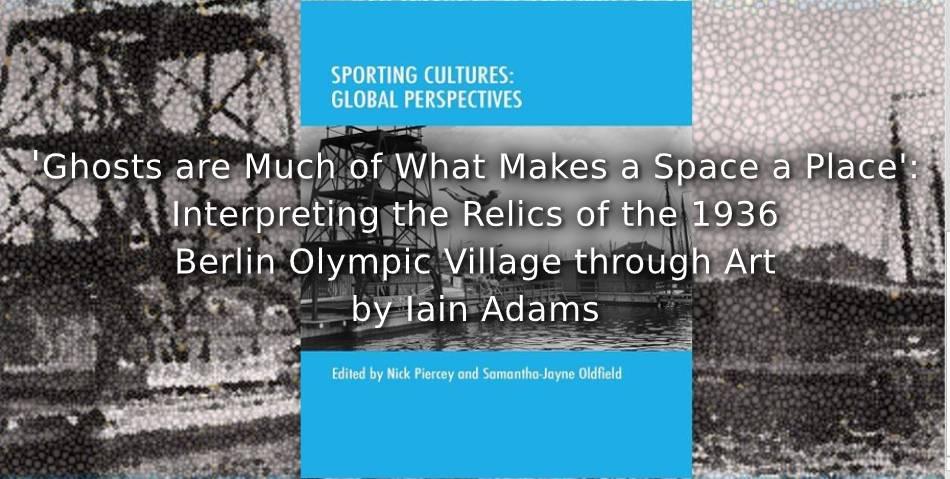
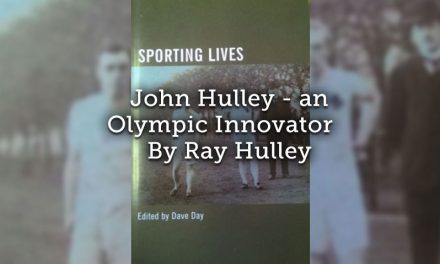
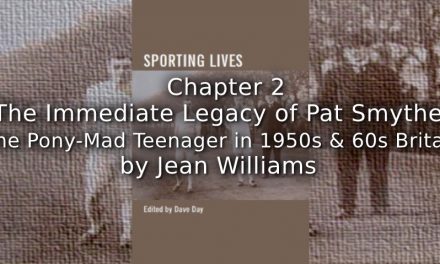
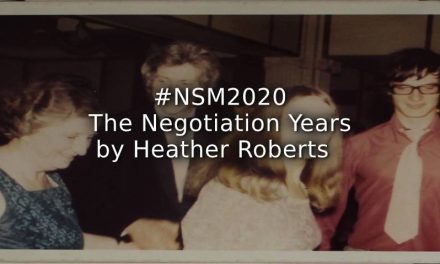
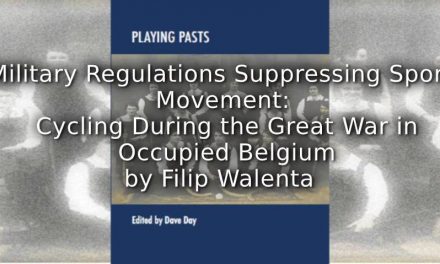
Fascinating paper, Iain. You’re so lucky to have visited the site before all the changes